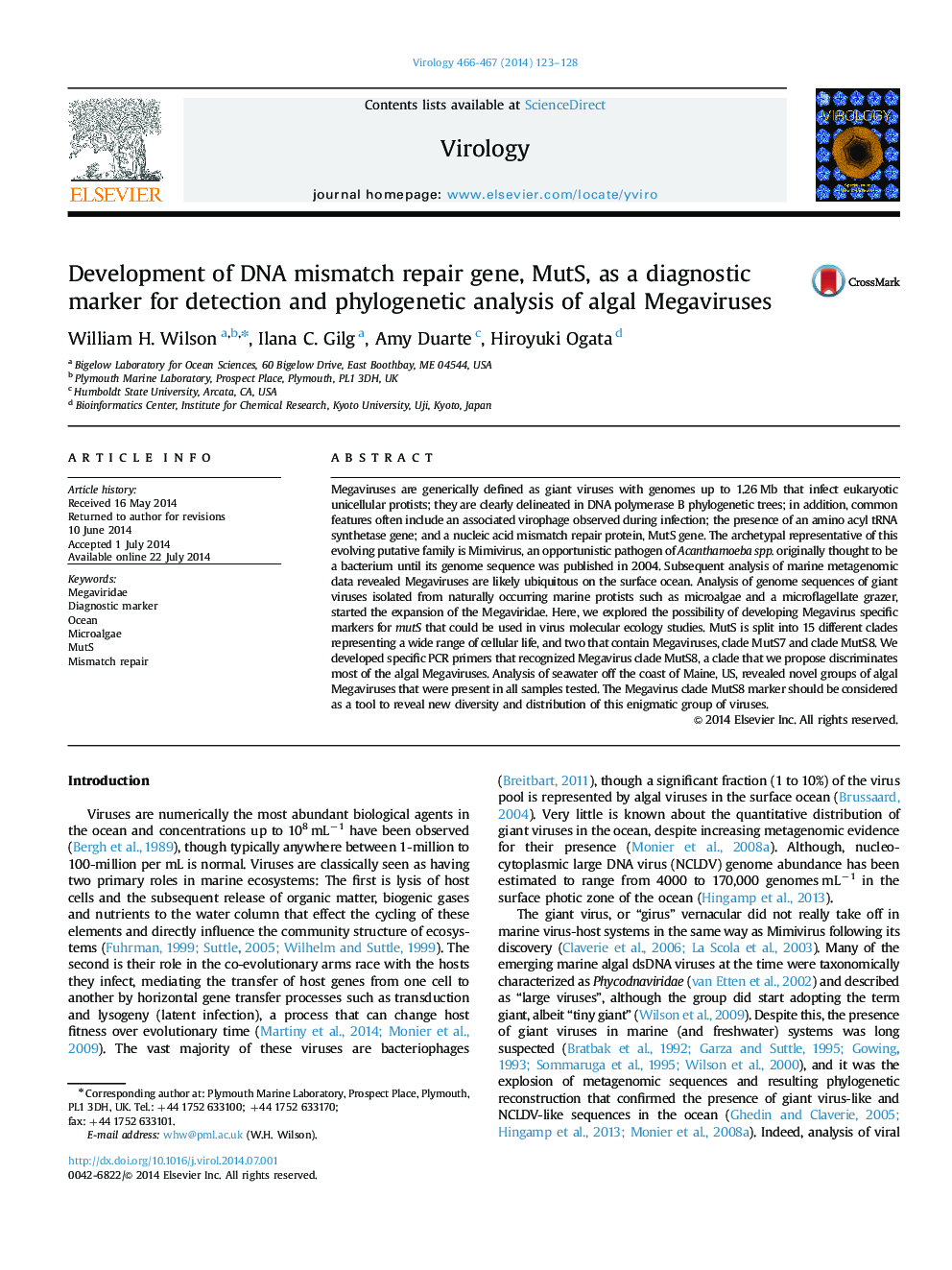| Article ID | Journal | Published Year | Pages | File Type |
|---|---|---|---|---|
| 6140007 | Virology | 2014 | 6 Pages |
Abstract
Megaviruses are generically defined as giant viruses with genomes up to 1.26Â Mb that infect eukaryotic unicellular protists; they are clearly delineated in DNA polymerase B phylogenetic trees; in addition, common features often include an associated virophage observed during infection; the presence of an amino acyl tRNA synthetase gene; and a nucleic acid mismatch repair protein, MutS gene. The archetypal representative of this evolving putative family is Mimivirus, an opportunistic pathogen of Acanthamoeba spp. originally thought to be a bacterium until its genome sequence was published in 2004. Subsequent analysis of marine metagenomic data revealed Megaviruses are likely ubiquitous on the surface ocean. Analysis of genome sequences of giant viruses isolated from naturally occurring marine protists such as microalgae and a microflagellate grazer, started the expansion of the Megaviridae. Here, we explored the possibility of developing Megavirus specific markers for mutS that could be used in virus molecular ecology studies. MutS is split into 15 different clades representing a wide range of cellular life, and two that contain Megaviruses, clade MutS7 and clade MutS8. We developed specific PCR primers that recognized Megavirus clade MutS8, a clade that we propose discriminates most of the algal Megaviruses. Analysis of seawater off the coast of Maine, US, revealed novel groups of algal Megaviruses that were present in all samples tested. The Megavirus clade MutS8 marker should be considered as a tool to reveal new diversity and distribution of this enigmatic group of viruses.
Related Topics
Life Sciences
Immunology and Microbiology
Virology
Authors
William H. Wilson, Ilana C. Gilg, Amy Duarte, Hiroyuki Ogata,
